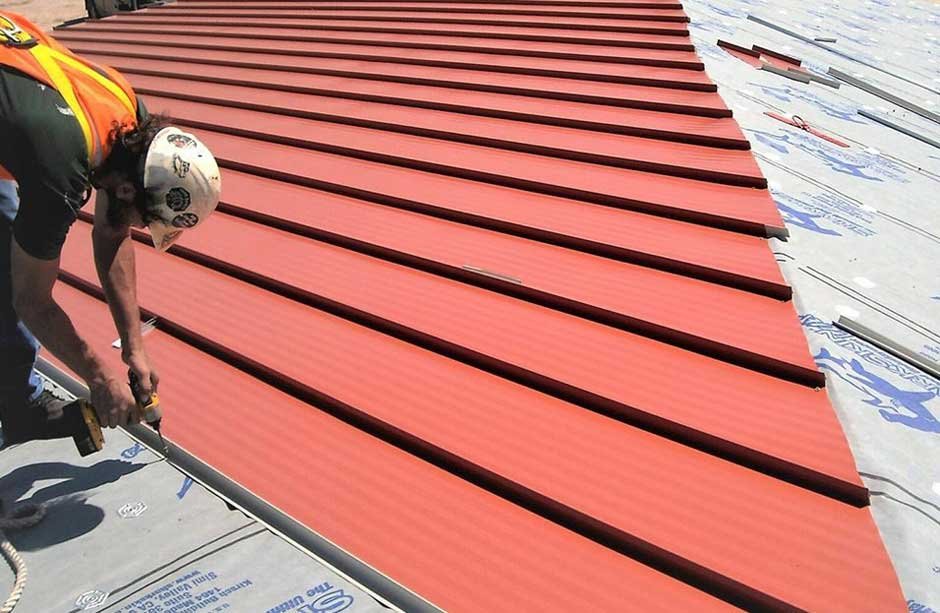The roof of your home or business is one of the most important components of your building. As such, choosing the right roofing material and the right underlayment for it is essential. Synthetic and felt roofing underlayment each offers its benefits and drawbacks, and it’s important to weigh these pros and cons when deciding which material to choose for your roofing project.
In this blog, we’ll discuss the advantages and disadvantages of synthetic and felt roofing underlayment so that you can make an informed decision when you contact your professional roofing contractors like Proformance Roofing. Let’s get started.
What is Roof Underlayment
Roof underlayment is a protective layer installed between the roofing material and the roof deck. It provides water protection for the roof and prevents ice dams by acting as an insulator against cold air and wind. The material used for the underlayment includes; asphalt, fiberglass, or polymers. In general, there are two types of roofing underlayment; synthetic and felt roofing underlayment.
Synthetic Roofing Underlayment: Definition and Overview
Synthetic roofing underlayments are made from long-lasting materials, including polypropylene, polyethylene, and polyurethane, depending on the specific roofing application. They are designed in various thickness levels, and they generally offer better protection against wind-driven rain, ice, snow, and other external weather elements. It can also help to reduce noise and vibration, provide a thermal barrier, and improve the overall insulation of the roofing system.
Pros of Synthetic Roofing Underlayment
- Durable
The primary benefit of synthetic roofing underlayment is its durability. Synthetic roofing underlayments are designed to withstand the elements and will not degrade over time. Their average lifespan ranges between 30 to 40 years; this makes them an ideal choice for long-term roofing solutions.
- Better Moisture-repelling capability
Synthetic roofing underlayment can also provide a more effective seal against moisture and air, helping to prevent water from penetrating the roof deck. This can help reduce the risk of structural damage from water infiltration.
- Lightweight
Synthetic underlayments are lightweight and wider in comparison to felt underlay. On average, synthetic underlays are usually 4 feet wide and weigh 23 pounds per 10 square feet.
- Easy to install
Because synthetic underlays are lightweight and wider, they’re much easier to install than felt roofing underlayment. Also, synthetic underlays are easier to handle and offer a firmer grip making it easier for roofers to walk on during installation.
Cons of Synthetic Roofing Underlayment
Although synthetic roofing underlayment can provide many benefits, there are a few potential drawbacks to consider before making your decision. The primary disadvantage is cost. Synthetic roofing underlayments are generally more expensive than traditional asphalt or felt underlayments.
What is Felt Roofing Underlayment?
Felt roofing underlayment is the traditional type of roofing underlayment made with tar paper and installed between the roof sheathing and shingles. It is usually made of felt paper that is saturated with asphalt or bitumen. The felt paper provides a layer of protection against water and moisture, while the asphalt or bitumen seals the seams and overlaps of the felt. Felt roofing underlayment comes in two categories of thickness; No. 30 felt, and No.15 felt.
No. 30 felt roofing underlays are designed to be stronger and thicker than No.15 felt
Pros of Felt Roofing Underlayment
Cost Effective
Installing felt roofing underlayment is a cost-effective way to protect your roof from water and moisture damage. It is typically less expensive than synthetic roofing underlayments, that’s why it’s more popular among homeowners.
Cons of Felt Roofing Underlayment
Susceptible to Damage
Felt roofing underlayment is susceptible to damage from wind and hail, as well as ripping and tearing due to foot traffic on the roof during installation. If it is not installed properly or is exposed to extreme temperatures, it can become compromised and need to be replaced sooner than expected.
Short Lifespan
In addition, felt roofing underlays do have a shorter lifespan than other roofing underlayments. It is designed to last up to 10 years, but this can vary depending on the climate and weather conditions
More difficult to install
Felt roofing underlays are weighted with an average 10 feet roll weighing up to 130 pounds. This makes it more difficult to handle during installation. Furthermore, this type of roof underlay is slippery; hence, making it difficult for roofers to walk safely on it during installation.
Synthetic and felt roofing underlayment can provide an effective extra layer of protection for your roof. However, it is important to consider the potential drawbacks of both roofing underlayments before making your decision.






